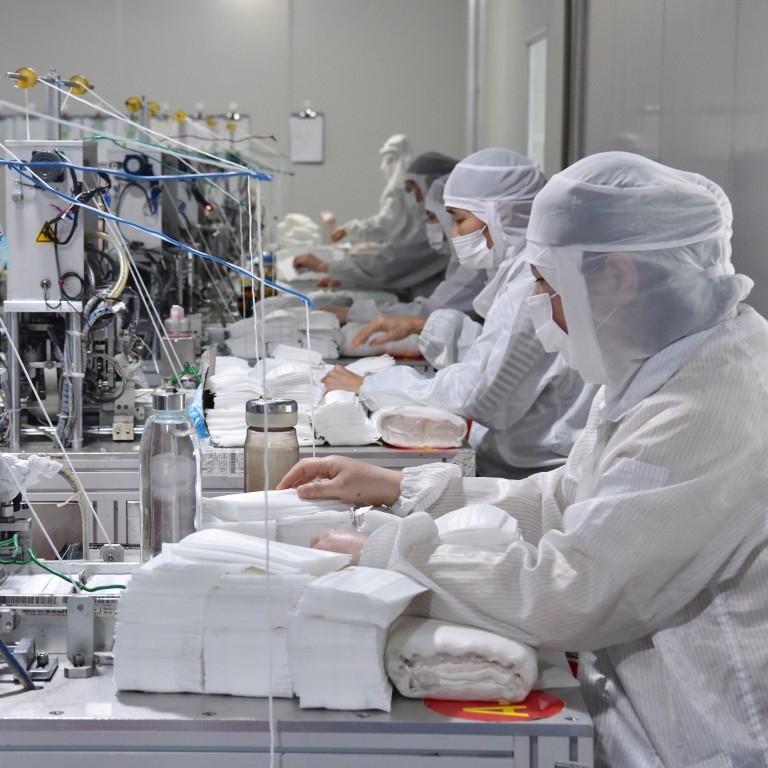
China’s provincial GDPs show widening gap between coastal and inland regions, as second-half economic concerns loom
- Economy of manufacturing powerhouse Guangdong expanded by 13 per cent in the first half of this year, with a nearly 27 per cent increase in exports despite port delays in May
- Five major coastal provinces contributed to 36.5 per cent of the national output in the first half of this year, slightly higher than the 36.2 per cent in pre-pandemic year of 2019
The disparities in provincial growth across China widened further during the past six months, with the economies in coastal regions surging ahead on the back of increased exports while northern and inland provinces continued lagging behind due to their dependency on slowing government investments, according to a Post analysis of new half-year provincial economic data.
The results contrast starkly with Beijing’s attempts to balance regional development while cultivating self-sufficient development strategies among individual provinces. They also come as concerns mount over a possible economic slowdown in China later this year, in part because analysts expect export growth to slow.
Those exports helped power economic growth in six coastal provinces – Guangdong, Fujian, Zhejiang, Shanghai, Jiangsu and Shandong – from January to June.
Using a two-year growth average, which the National Bureau of Statistics utilises to reduce coronavirus distortions, Guangdong’s gross domestic product (GDP) growth outpaced the national level by 0.2 percentage points in the first quarter. However, the province’s GDP grew by only 5 per cent in the first half, below the national level of 5.3 per cent.
Despite being the strongest province economically, Guangdong’s two-year average growth in retail sales, a key gauge of consumption, was only 1.4 per cent in the first half of this year, well below the national rate of 4.4 per cent.
The economy of Jiangsu province was the next strongest, with a year-on-year increase of 13.2 per cent to 5.52 trillion yuan, while the economy of Shandong province expanded by 12.8 per cent, year on year, to 3.89 trillion yuan.
Together, the five major coastal provinces – with Zhejiang yet to release local data – contributed to 36.5 per cent of the national output in the first half of this year, just a tad higher than the 36.2 per cent in pre-pandemic year of 2019, according to the Post’s analysis.
In contrast, the three rust-belt northeastern provinces – Liaoning, Jilin and Heilongjiang – saw their combined share of the national economic growth falling to 4.6 per cent in the year’s first half, from 5.1 per cent in 2019.
Liaoning, an old industrial base, reported a two-year average growth of 2.8 per cent, and its national ranking drop to 19th among the 31 provincial-level jurisdictions – a fall from 15th in 2019.
These provinces, much like other northern and inland provinces, tend to rely on government assistance, spending and investment for economic growth, and as government stimulus measures have slowed, so too did their growth, the Post analysis found.
Traditionally, these provinces have suffered flagging demand for their heavy industry output and lagged other provinces due to stricter pollution controls, demographic challenges caused by an ageing population and brain drain among the young educated population, according to an analysis by consultant China Briefing.
Beijing’s reluctance to initiate another round of pandemic-related infrastructure spending, along with its clampdown on the property market, also contributed to the slowing in the economies of inland and rust-belt provinces mainly in the central and western regions.
Henan, the country’s third-populous province, also underperformed with a 10.2 per cent year-on-year GDP rise to 2.89 trillion yuan. And its two-year growth rate of 4.8 per cent was also lower than the 5.3 per cent national growth.
The GDP of Hubei, where the first Covid-19 cases were reported, grew 28.5 per cent from a year earlier to 2.28 trillion yuan, but only 1.8 per cent in terms of its two-year average.
On Wednesday, the State Council acknowledged the soft economic conditions ahead, including slower exports, as it vowed to improve trade and speed up export rebates to “maintain the steady growth of foreign trade”.
However, Capital Economics, which tracks the country’s economic activities with a variety of proxy indicators, found a 0.3 per cent month-on-month contraction in June and warned of downhill momentum.
“We think China’s Covid-19 rebound has reached its limit and that output will drop back further during the rest of this year,” according to its note on Friday.
Other analysts said China has enough fiscal tools in its arsenal to deal with the potential slowdown, and they called for policy fine-tuning.
Larry Hu, chief China economist at Macquarie Capital, said he believed that the toughest period of policy normalisation has almost gone and marginal easing is in sight.
“Some regions may have their respective problems, but at the national level the authorities are well equipped to deal with the headwinds,” he said.

